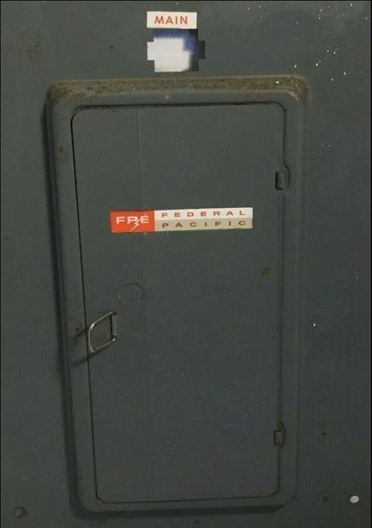What You Should Know About Federal Pacific Electric Co. Breaker Panels
Federal Pacific Electric (FPE) breaker panels were commonly used from the 1950s to the 1980s and were installed in both residential and commercial buildings. They are now considered by many to be a latent fire risk and generally will not pass inspection. FPE lost a class-action lawsuit in New Jersey in 2005.
According to a 2018 article in the Washington Post, expert research on the panels found that FPE Stab-Lok breakers failed to trip when they should have 51 percent of the time, creating a fire hazard. The study linked as many as 2,800 fires and 13 deaths, plus $40 million in property damage, per year to the breakers.
Because of the known issues of FPE components, Grinnell Mutual does not accept risks that include any FPE-made breaker panels.
FPE electrical components and Stab-Lok circuit breakers should be replaced with a UL-listed circuit-breaker box and UL-listed circuit breakers by an insured, licensed electrician in accordance with the National Fire Protection Association’s National Electric Code® (NFPA 70®) or state/local codes, whichever is more stringent.
What makes Federal Pacific Electric panels dangerous?
- Defective circuit breakers can fail to trip in response to overloaded wires or short circuiting, which can heat the wires and create a serious risk of fire.
- Wires may be too crowded in the panel box.
- Breakers often have loose connections.
- Even when tripped, the breaker box can still send electricity through the structure.
- Testing by the Consumer Product Safety Commission found that FPE breakers fail certain Underwriters Laboratories (UL) requirements.
How to Identify FPE breakers
- The breaker box door usually says “Federal Pacific Electric,” “Federal Pacific,” “Federal Pioneer,” or “FPE.”
- There may be an FPE logo.
- Inside, there will usually (not always) be the words “Stab-Lok” on the breaker panel somewhere.
- There may be panel labels that say the company’s name (or a version of it).
- A licensed electrician can remove breakers from the panel and look for the E- or F-shaped openings that are unique to Stab-Lok breakers.
Pictures used with permission, The Craftsman Blog



